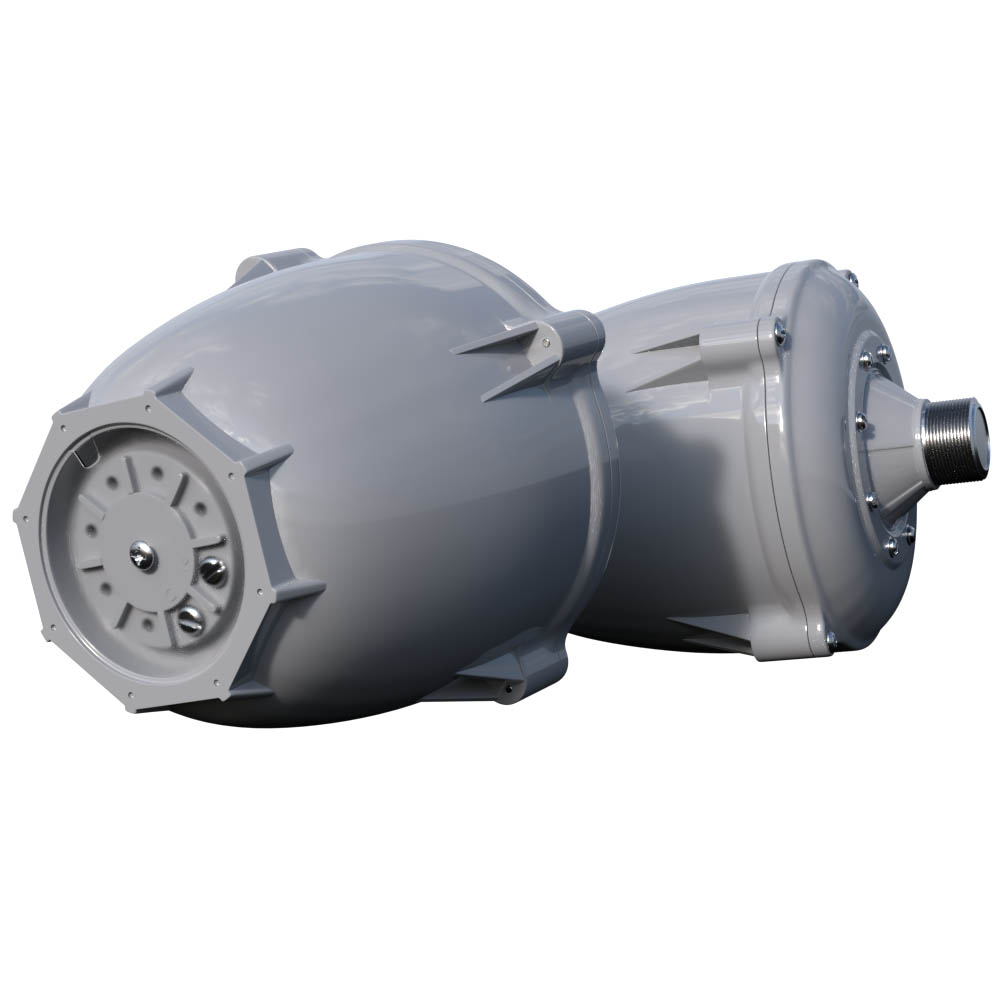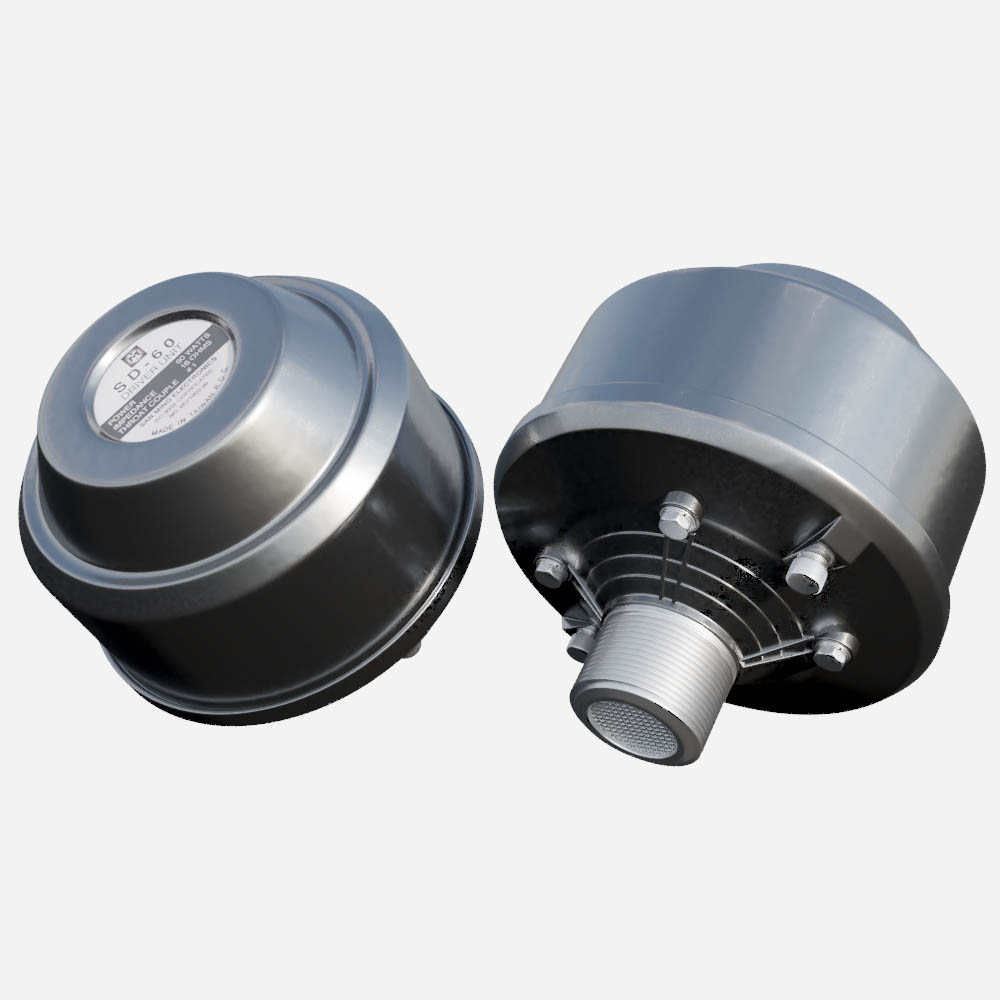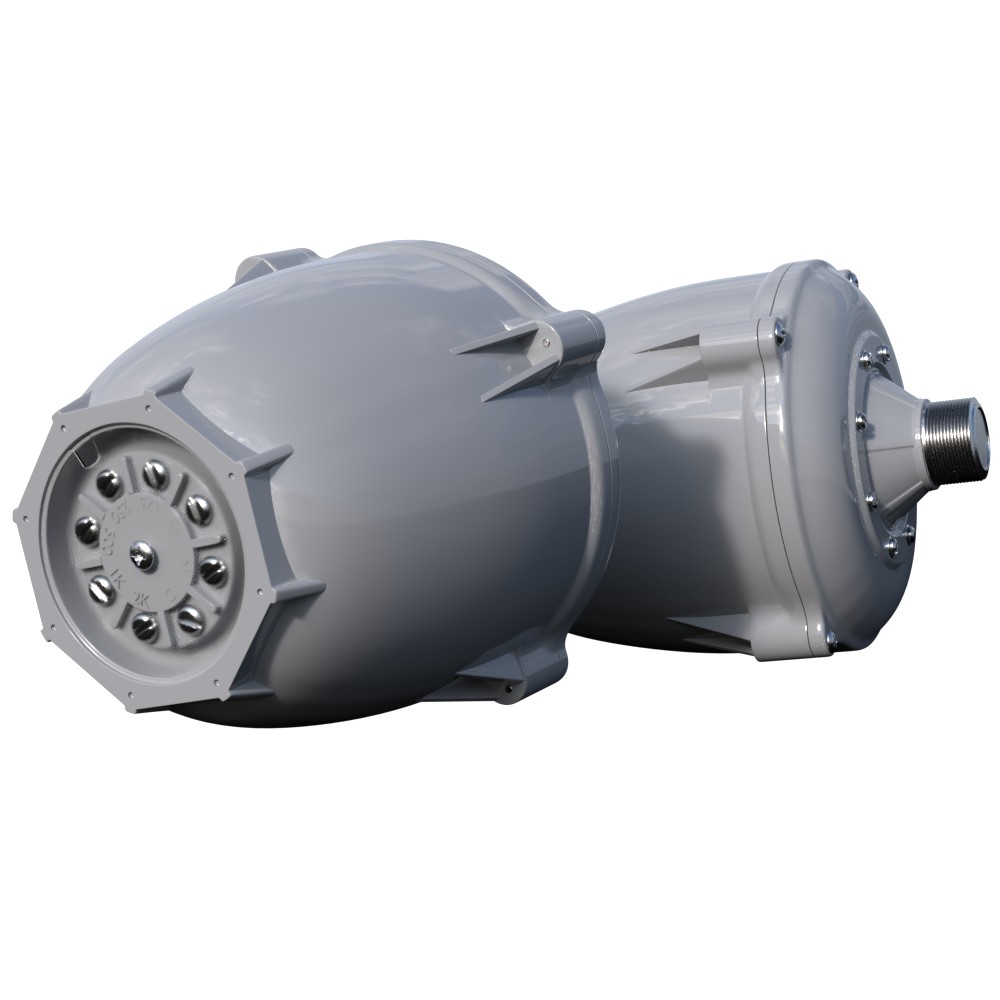No sound: Difference between revisions
(PD60AT clarification & testing speaker cable) |
|||
| Line 7: | Line 7: | ||
SJTO-14 wire supplied by chime master will add about 0.0056 ohms per foot to the driver reading. | SJTO-14 wire supplied by chime master will add about 0.0056 ohms per foot to the driver reading. | ||
==PD60A Drivers== | ===PD60A Drivers=== | ||
[[File:PD60Drivers.jpg|400px|PD60 Drivers]] | [[File:PD60Drivers.jpg|400px|PD60 Drivers]] | ||
*Single functional PD60 driver will read 9.5 - 10ish ohms directly from the terminals on the driver, not including any wire | *Single functional PD60 driver will read 9.5 - 10ish ohms directly from the terminals on the driver, not including any wire | ||
| Line 15: | Line 15: | ||
*Four PD60 drivers wired into a speaker line that is 25ft. will read 2.7ish ohms | *Four PD60 drivers wired into a speaker line that is 25ft. will read 2.7ish ohms | ||
==SD60 drivers== | ===SD60 drivers=== | ||
[[File:SD60Drivers.jpg|400px|SD60 Drivers]] | [[File:SD60Drivers.jpg|400px|SD60 Drivers]] | ||
*Single functional SD60 driver will read 9.5 - 10 ohms directly from the terminals on the driver, not including any wire | *Single functional SD60 driver will read 9.5 - 10 ohms directly from the terminals on the driver, not including any wire | ||
*Four SD60 drivers will read 2.5 | *Four SD60 drivers will read 2.5 Ohms when wired together in parallel with a short length of wire | ||
*Two SD60 drivers together will read 5 | *Two SD60 drivers together will read 5 Ohms when wired together in parallel with a short length of wire | ||
*Four SD60 drivers wired into a speaker line roughly 250ft. in length will read 1.4 | *Four SD60 drivers wired into a speaker line roughly 250ft. in length will read 1.4 Ohms | ||
*Four SD60 drivers wired into a speaker line that is 25ft. will read 2.14 | *Four SD60 drivers wired into a speaker line that is 25ft. will read 2.14 Ohms | ||
==PD60AT Transformer Drivers== | ===PD60AT Transformer Drivers=== | ||
[[File:PD60ATDrivers.jpg|400px|PD60AT Drivers]] | [[File:PD60ATDrivers.jpg|400px|PD60AT Drivers]] | ||
*Single | |||
These drivers have several possible taps they could be hooked up to. Our examples show a typical 60W tap connection. Even the 16 ohm tap is a transformer winding, so the condition of these drivers can not be determined without disassembly. Four large screws will remove the back shell (where the transformer is mounted) from the diaphragm assembly. The red and white voice coil wires can be disconnected from the transformer and measured. A good voice coil should read 9-10 Ohms DC. | |||
The following measurements may be useful to determine initial condition of the speaker line. | |||
*Single PD60AT between Common and 60W tap = 2.8 Ohms (regardless of voice coil condition) | |||
*Two PD60AT drivers measured through 250 feet of speaker line = 2.8 Ohms | |||
*Four PD60AT drivers measured through 250 feet of speaker line = | |||
*Four PD60AT drivers measured through 25 feet of speaker line = | |||
== Testing speaker line == | |||
# At the amplifier location, disconnect both wires of the speaker cable from the amplifier. Take preliminary measurement with speakers still connected on the two wires of the line at the amplifier end. Compare to the readings above (Testing Speakers) and write it down. | |||
# Leave the two wires at the amplifier end disconnected, not touching each other, or any other conductive material. | |||
# Go the speaker location, open the junction box, disconnect the cable from the amplifier from the speakers and take a measurement. There should be no resistance reading (no change on the Ohm Meter's display). Any numerical reading on the meter will indicate a short on the speaker cable. | |||
# At the speaker location, short the two wires together on the cable that runs down to the amplifier. Then at the amplifier end of the cable put the Ohm Meter test leads on the two wires of the cable. A non-numeric reading will indicate an open (possibly cut) cable. For 14 AWG SJTO cable, you should see about 0.006 Ohms per foot of cable (don't forget to subtract the resistance of your meter's leads). | |||
[[Category:Troubleshooting]] | |||
Revision as of 20:10, 9 November 2018
Testing Speakers
First, it is crucial to determine which model of audio drivers are being tested. Then, disconnect the outside speakers from the two terminals on the back of the amplifier. Put a DC ohm meter across the leads going to the tower. If the reading is higher than the listed value, then one or more of the drivers could be open, or a connection is corroded. If lower, one or more drivers or the wiring may be shorted.
Determine the resistance of the Ohm meter's own leads by touching the two test leads together. Subtract the displayed value from measurements before comparing to those given below.
SJTO-14 wire supplied by chime master will add about 0.0056 ohms per foot to the driver reading.
PD60A Drivers
- Single functional PD60 driver will read 9.5 - 10ish ohms directly from the terminals on the driver, not including any wire
- Four PD60 drivers will read 2.5ish ohms when wired together in parallel with a short length of wire
- Two PD60 drivers together will read 5ish ohms when wired together in parallel with a short length of wire
- Four PD60 drivers wired into a speaker line roughly 250ft. in length will read 3.8ish ohms
- Four PD60 drivers wired into a speaker line that is 25ft. will read 2.7ish ohms
SD60 drivers
- Single functional SD60 driver will read 9.5 - 10 ohms directly from the terminals on the driver, not including any wire
- Four SD60 drivers will read 2.5 Ohms when wired together in parallel with a short length of wire
- Two SD60 drivers together will read 5 Ohms when wired together in parallel with a short length of wire
- Four SD60 drivers wired into a speaker line roughly 250ft. in length will read 1.4 Ohms
- Four SD60 drivers wired into a speaker line that is 25ft. will read 2.14 Ohms
PD60AT Transformer Drivers
These drivers have several possible taps they could be hooked up to. Our examples show a typical 60W tap connection. Even the 16 ohm tap is a transformer winding, so the condition of these drivers can not be determined without disassembly. Four large screws will remove the back shell (where the transformer is mounted) from the diaphragm assembly. The red and white voice coil wires can be disconnected from the transformer and measured. A good voice coil should read 9-10 Ohms DC.
The following measurements may be useful to determine initial condition of the speaker line.
- Single PD60AT between Common and 60W tap = 2.8 Ohms (regardless of voice coil condition)
- Two PD60AT drivers measured through 250 feet of speaker line = 2.8 Ohms
- Four PD60AT drivers measured through 250 feet of speaker line =
- Four PD60AT drivers measured through 25 feet of speaker line =
Testing speaker line
- At the amplifier location, disconnect both wires of the speaker cable from the amplifier. Take preliminary measurement with speakers still connected on the two wires of the line at the amplifier end. Compare to the readings above (Testing Speakers) and write it down.
- Leave the two wires at the amplifier end disconnected, not touching each other, or any other conductive material.
- Go the speaker location, open the junction box, disconnect the cable from the amplifier from the speakers and take a measurement. There should be no resistance reading (no change on the Ohm Meter's display). Any numerical reading on the meter will indicate a short on the speaker cable.
- At the speaker location, short the two wires together on the cable that runs down to the amplifier. Then at the amplifier end of the cable put the Ohm Meter test leads on the two wires of the cable. A non-numeric reading will indicate an open (possibly cut) cable. For 14 AWG SJTO cable, you should see about 0.006 Ohms per foot of cable (don't forget to subtract the resistance of your meter's leads).


